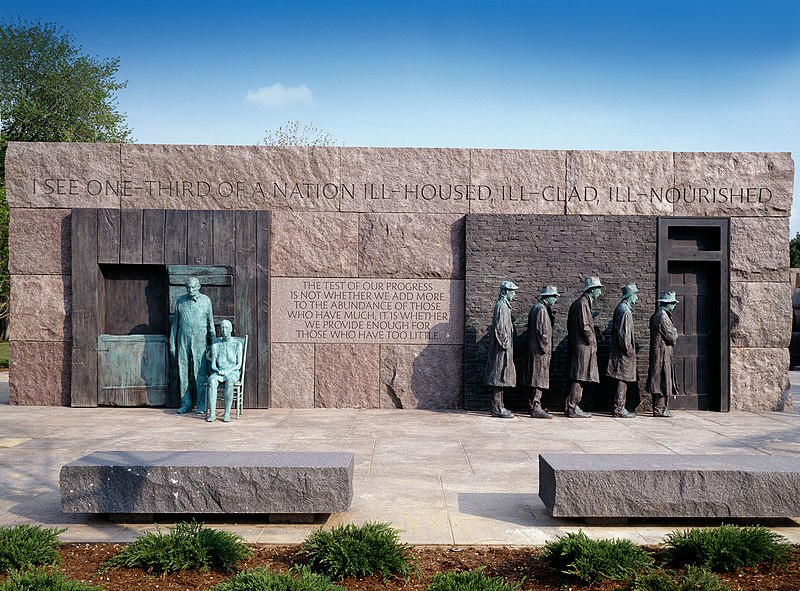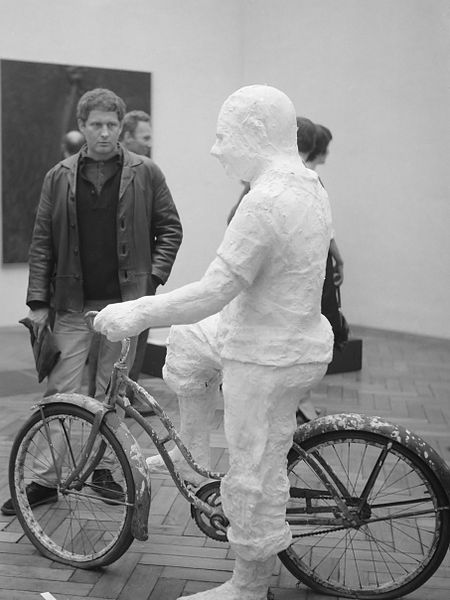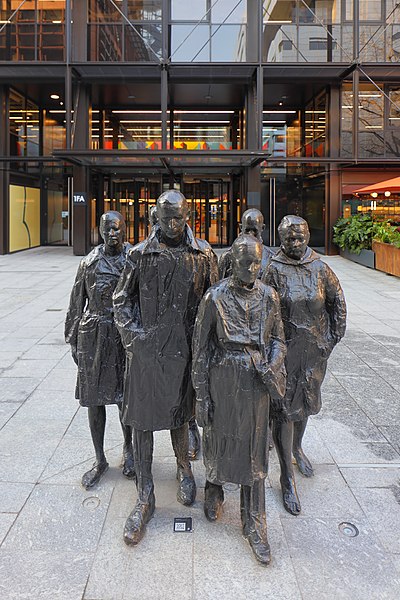6.3 POP ART
Robert Rauschenberg
Robert Rauschenberg (1928-2008) blurred the lines between painting and sculpture. His mature works, known as Combines, used every day, discarded objects that had been made by others. He wanted his art to show how a mundane object could also be beautiful. His work Reservoir, see figure 6.15 is made using things he found on the streets of lower Manhattan where he lived. The two clocks are set to the time he started the work and the time he finished it. Rauschenberg said that the canvas is not a window into space, but a surface, like a desktop, onto which things are piled. He wanted to remove the artist from the work of art and ask the questions: what is art and how does it work?
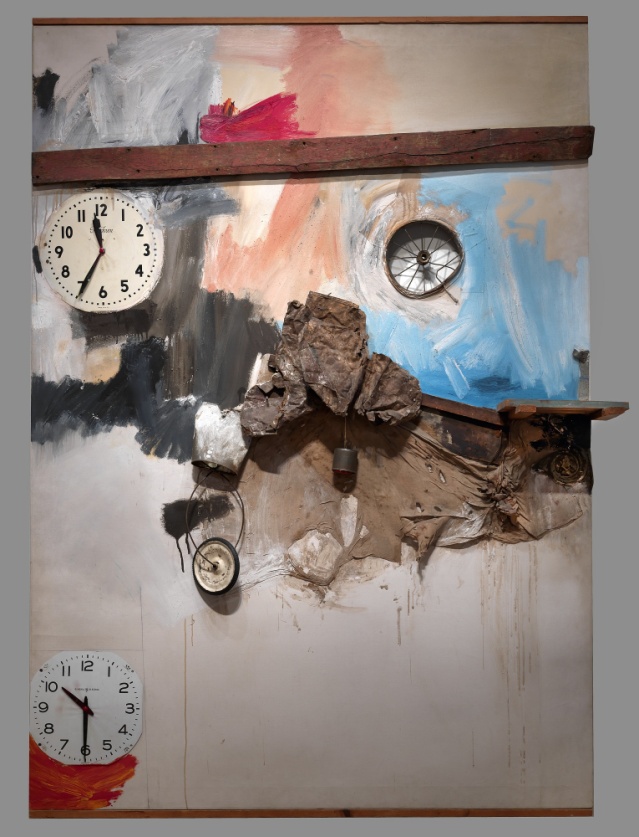
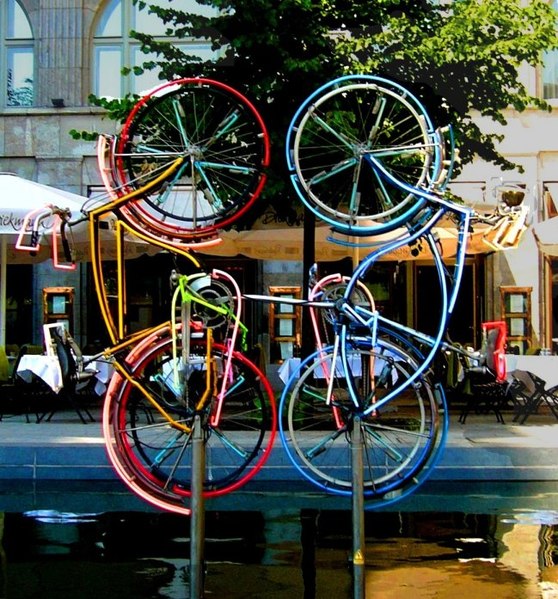

Robert Rauschenberg, Bed 4:48If you receive an error with the link above, use the following link https://www.khanacademy.org/humanities/art-1010/post-war-american-art/new-york-school/v/robert-rauschenberg-bed-1955?modal=1
Jasper Johns
Jasper Johns (1930-) is still living as of the writing of this textbook. He received the Presidential Medal of Freedom from Barak Obama in 2011 at the age of eighty. He is best known for his images of targets, the American flag, numbers and letters. His idea is to paint or print objects that the mind already knows. This forces the viewer to reevaluate the work. Is it a flag? How do I feel about that flag? What does it mean to me? What do those letters or numbers mean? Art historians have placed him in both Abstract Expressionism and in Pop art, but maybe he is best thought of as a bridge between the two categories.
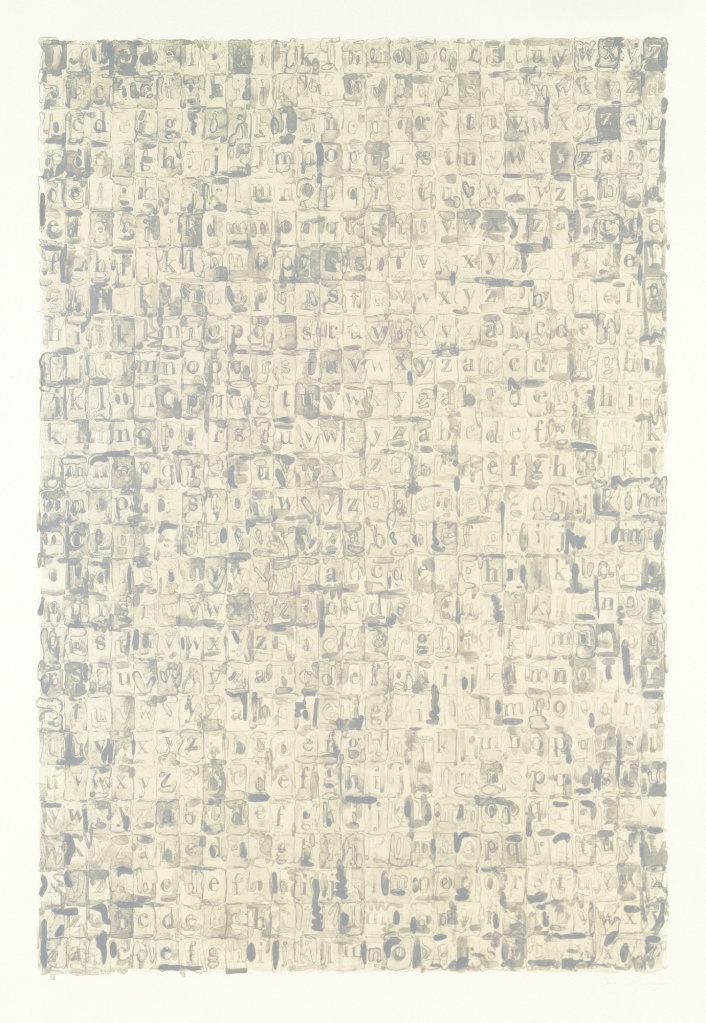
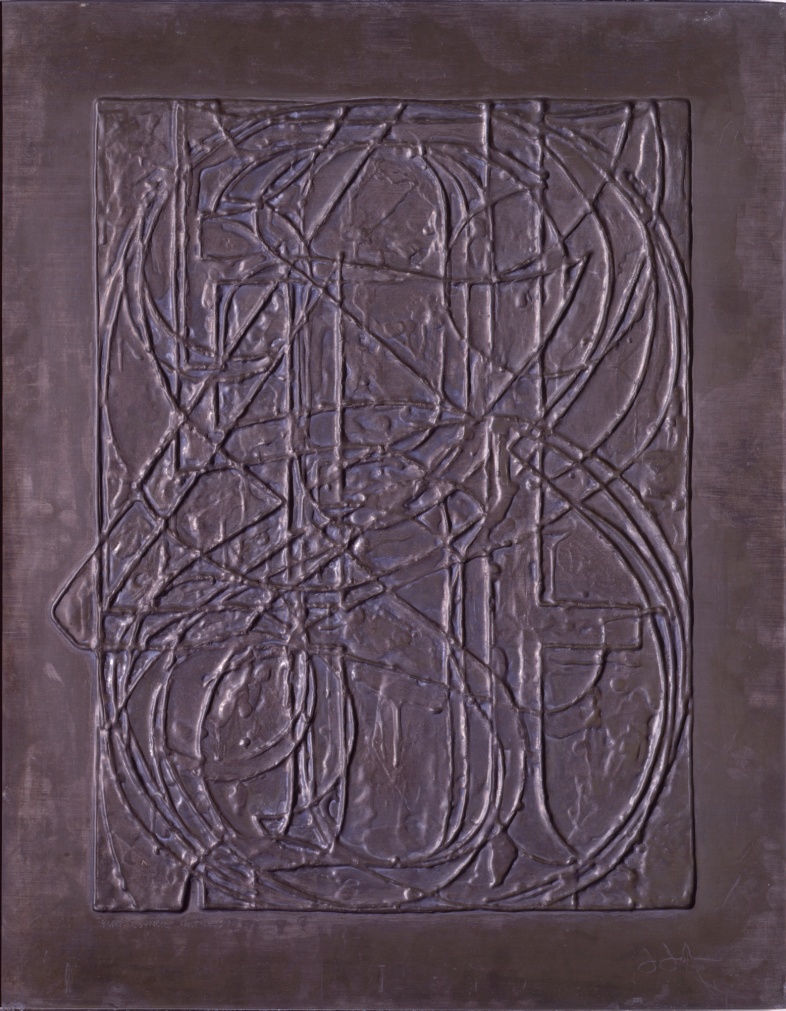
Jasper Johns placed repeated letters of the alphabet into a grid in his 1968 printed work Gray Alphabets. He used the same idea in Numerals, 0 through 9, which forces the viewer to look closely at the work to find the numbers. Watch the videos to learn more about Johns’ flag paintings.
Jasper Johns, Flag 6:04, Johns, White Flag 2:46If you receive an error with the links above, use the following links https://www.khanacademy.org/humanities/art-1010/post-war-american-art/new-york-school/v/jasper-johns-flag?modal=1, https://www.khanacademy.org/humanities/art-1010/post-war-american-art/new-york-school/v/below-the-surface?modal=1
Roy Lichtenstein
Roy Lichtenstein (1930-1997) was a Jewish American pop artist He grew up in New York and was drafted into the Army and served in Europe during WWII. After the war he taught for a time and then met Claes Oldenburg and Jim Dine, and then returned to New York. He was particularly interested in comic strips and depictions of advertizing. He appeared in documentaries and made posters for political events, such as Bill Clinton’s presidential campaign. Many of his works include dots, which are reminiscent of the dots made when printing cartoons and other inexpensive works for mass distribution. The dots in his paintings are not printed, but are painted by hand. For instance, see image 6.20, which is made of felted fabric. Each dot is individually cut and placed on the background. Lichtenstein was interested in the works of the Impressionist Claude Monet and made several works that were based on Monet’s Rouen Cathedral series and his haystacks, but the images were made with painted dots. View the video to see an example of this process. Even his sculpture has the familiar dots.
Rouen Cathedral Set V 3:096 If you receive an error with the link above, use the following link https://smarthistory.org/roy-lichtenstein-rouen-cathedral-set-v/
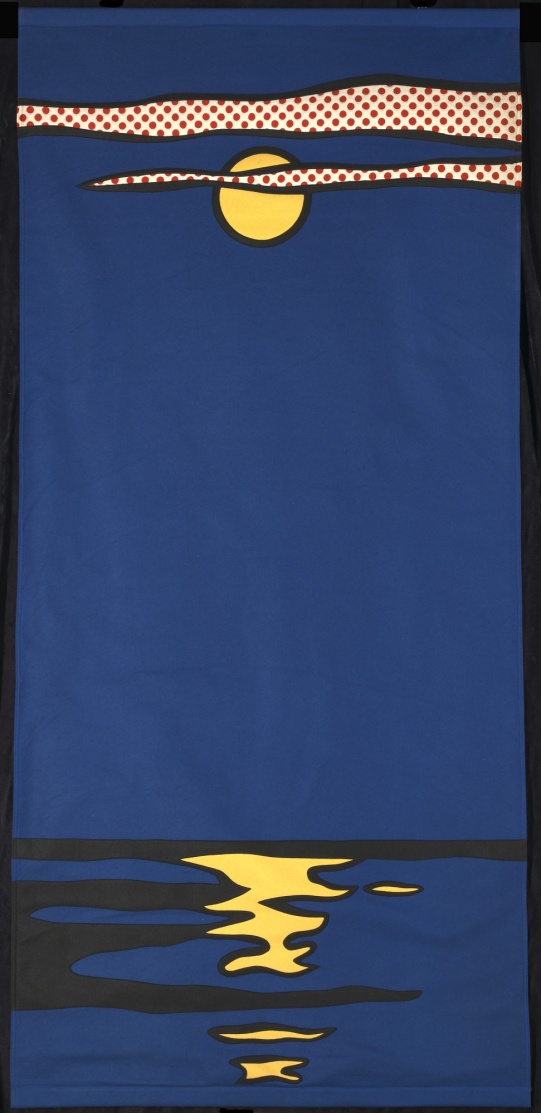
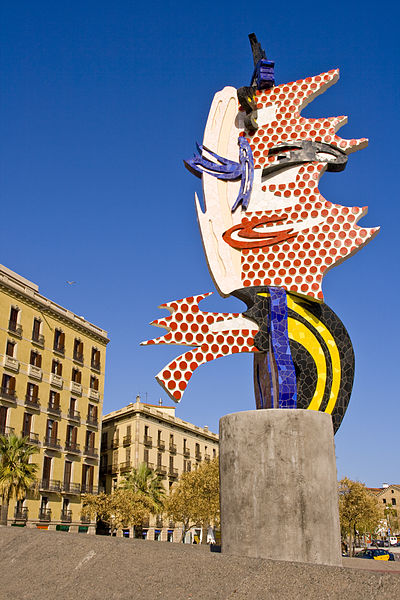
Andy Warhol
Andy Warhol (1928-1987) was born in Pittsburgh and died in New York. He was a painter, a printmaker and a filmmaker and was a leader in the Pop Art movement. His idea was that American culture was too commercialized, although he worked as a commercial illustrator after he graduated from the Carnegie Institute of Technology in 1949. In 1962 he began painting soup cans, Coca-Cola bottles and other images of everyday consumer goods. By 1963 he began using the silkscreen method to mass produce images of celebrities in outlandish color variations. In a way he was making fun of American consumerism, and that was what made Pop art of the 1960s significant. Later in the decade he focused more of his time making films which were long (up to 25 hours), boring, and erotic.9
Mass Consumerism, Warhol, and 1960’s America5:2210
If you receive an error with the link above, use the following link https://www.khanacademy.org/humanities/art-1010/xdc974a79:pop-art/xdc974a79:american-and-european-pop-art/v/warhol-coca-cola
Why is this art? Andy Warhol, Campbell’s Soup Cans 7:0811
If you receive an error with the link above, use the following link https://www.khanacademy.org/humanities/art-1010/xdc974a79:pop-art/xdc974a79:american-and-european-pop-art/v/andy-warhol-campbell-s-soup-cans-why-is-this-art
The case for Andy Warhol 3:4312
If you receive an error with the link above, use the following link https://www.khanacademy.org/humanities/art-1010/xdc974a79:pop-art/xdc974a79:american-and-european-pop-art/v/the-case-for-andy-warhol-the-art-assignment-pbs-digital-studios
Warhol, Gold Marilyn Monroe 3:1413
If you receive an error with the link above, use the following link https://www.khanacademy.org/humanities/art-1010/xdc974a79:pop-art/xdc974a79:american-and-european-pop-art/v/warhol-gold-marilyn-monroe-1962
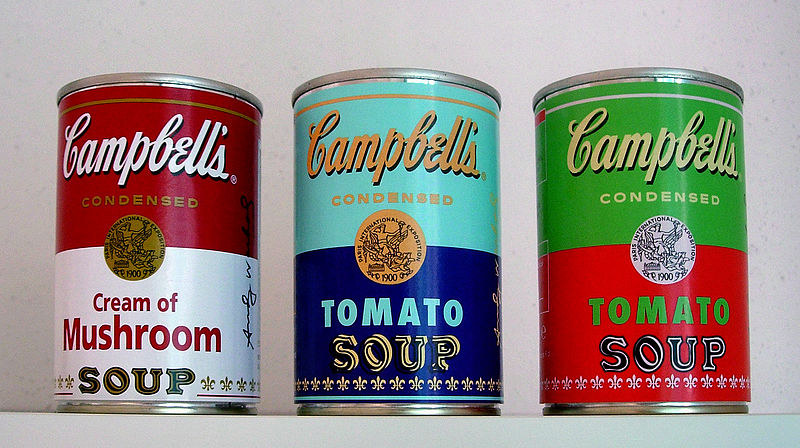
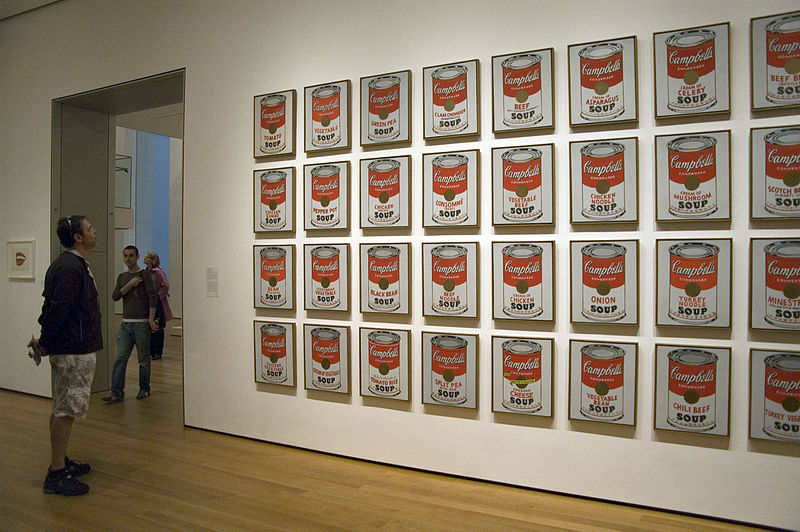
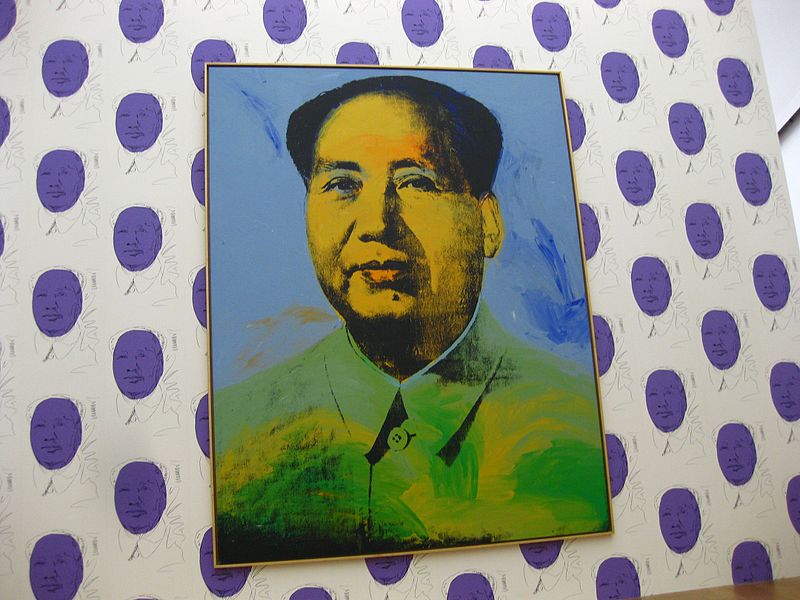
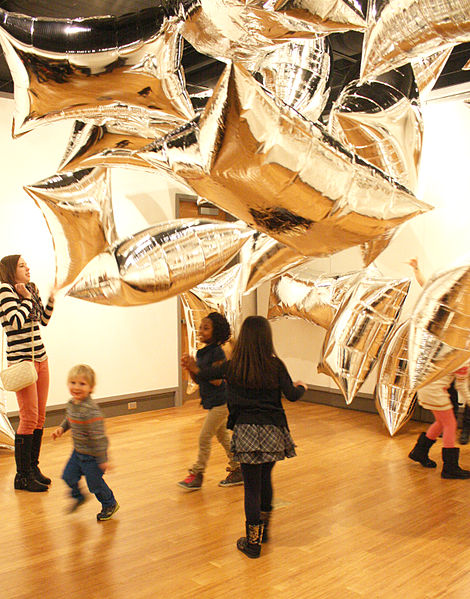
Claes Oldenburg
Claes Oldenburg (1929-2022) was born in Stockholm, Sweden, the son of a Swedish diplomat. He became an American citizen in 1953 and studied at Yale and at the Art Institute in Chicago. In 1961 he opened an actual store on 2nd Street in New York and willed it with objects made of painted plaster and attractively priced for such prices as $198.99. Many of these objects represented food, such as ice cream sundaes, sandwiches, or pieces of cake toughly modeled and garishly painted. His early works were a mixture of magazine illustrations, paintings, collages and eventually large outdoor public sculptures. Many of his large works were made in collaboration with Coosje van Bruggen, whom he married in 1977. Later, with his wife doing much of the sewing, that began creating these food delicacies in vinyl and canvas, stuffed with kapok, but now on a gigantic scale as they might appear in a surrealist nightmare. He was interested in the Pop culture and in performance art. “In 1985 his work Knife Ship 1, a giant Swiss Army knife with oars was part of the performance of Il Corso del Coltello which was performed in Venice which was then sent to museums in America and Europe.”18
Oldenburg, Floor Cake – 3:2919If you receive an error with the link above, use the following link https://www.khanacademy.org/humanities/art-1010/xdc974a79:pop-art/xdc974a79:american-and-european-pop-art/v/oldenburg-floor-cake-1962
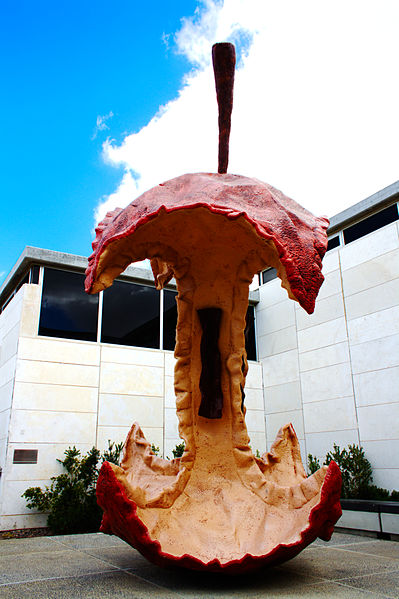
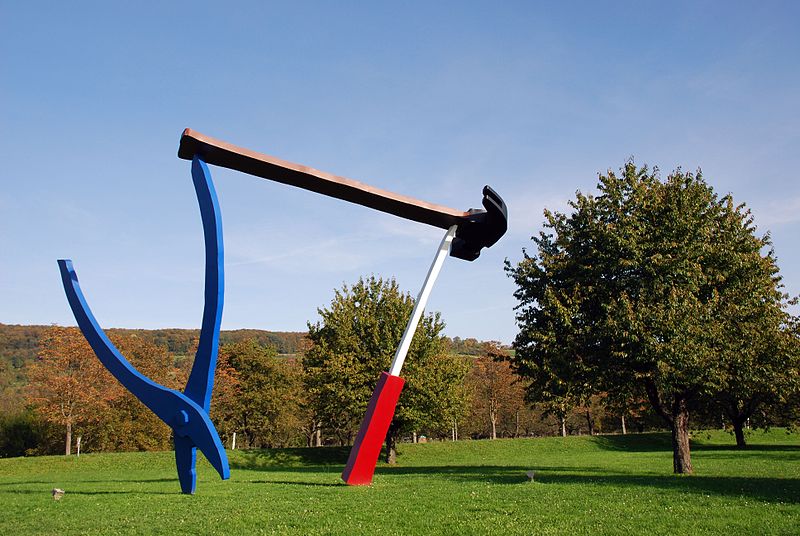


Oldenburg’s use of soft materials led him ultimately to the translation of rigid objects such as bathroom or kitchen fixtures, into soft and collapsing versions. These familiar objects such as toilets, bathtubs, typewriters or radiators, which were now collapsing, became disturbing commentaries on contemporary life. In the opposite track he also took things that were soft, such as an ice cream cone, and made it giant sized, and plopped it on the top of a five story building. He has also made proposals for many monuments that were not made, such as a giant concrete block inscribed with the names of the war dead, placed in the middle of an intersection. So far no one commissioned that work.
David Smith
Roland David Smith (1906-1965) was born in Indiana and attended several colleges for a short time before taking a job on an automobile assembly line. He moved to New York in 1926 where he met and married his wife of 25 years, Dorothy Dehner. While in New York he joined the Art Students League of New York he studied with John Sloan and was introduced to the work of Picasso, Mondrian, and Kandinsky. For a time he worked in the Works Progress Administration’s Federal Art Project where he also became familiar with the welded sculpture of Julio Gonzalez and Picasso. He worked as a welder during World War II, making locomotives and tanks. The skills he learned in the automotive assembly line and during the war led him to make sculpture by welding and using an acetylene torch rather than casting metals as had been done for centuries in the past.
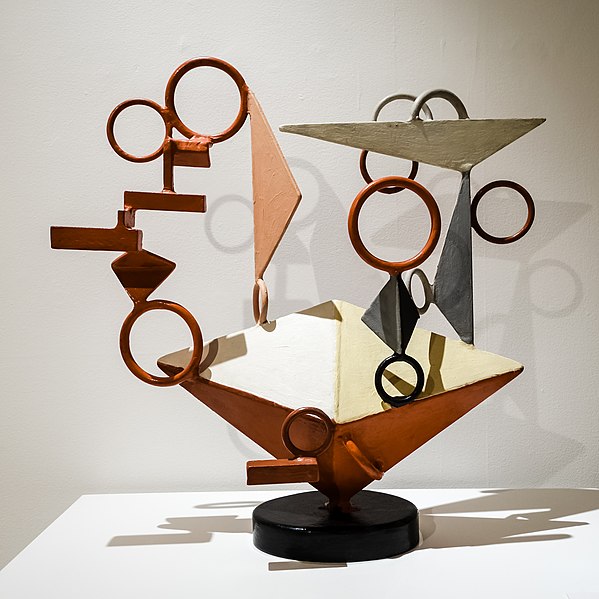
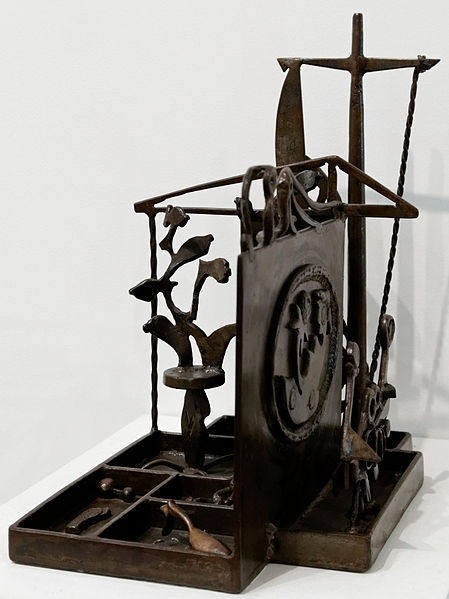
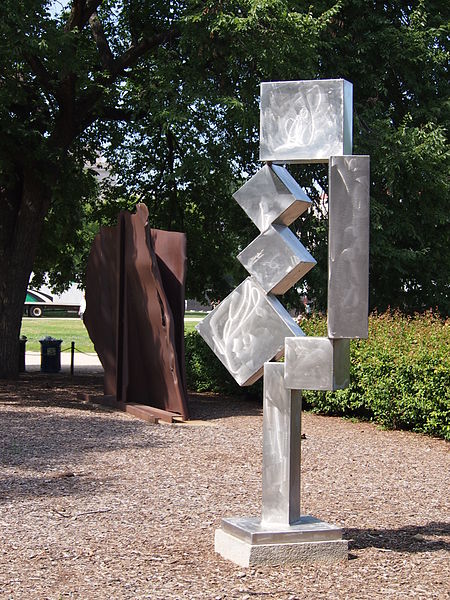
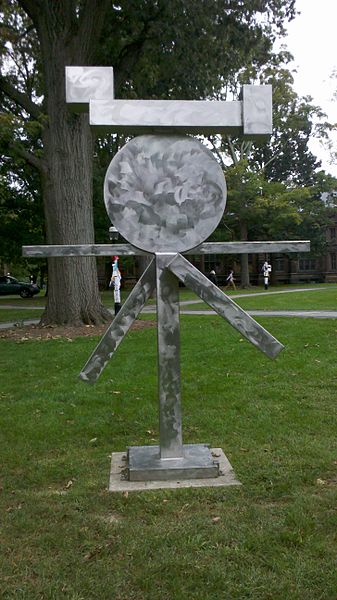
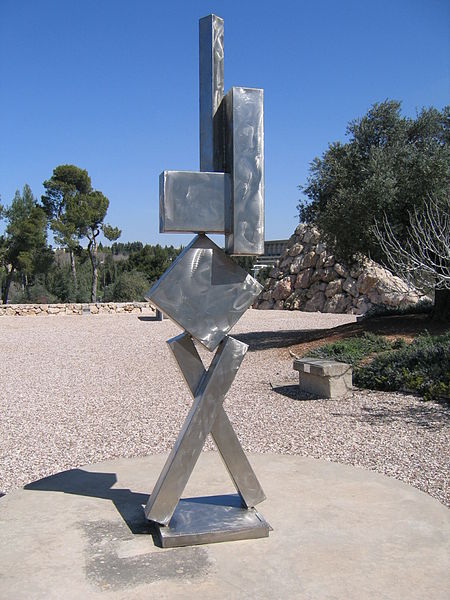
Smith often made a series of similar, though unique sculptures, often using stainless steel which he burnished to give the surface a texture that could be compared to the application of paint used by the abstract expressionist painters.
George Segal
George Segal was born in New York City. (1924-2000) His parents, a Jewish family from Eastern Europe, owned a kosher butcher shop on 174th Street in New York and bought a chicken farm in New Jersey where they raised their family. George attended New York University and graduated in 1949 with a teaching degree. He became friends with artists in New York and New Jersey. He is best known for his life-sized figures made from bandages soaked in plaster. George’s process was to wrap his friends and family in wet bandages, and then remove the hardened shell and put it back together with more plaster. He then used found objects to create a “scene” and placed the figures in them. These could be park benches, couches, different modes of transportation, or beds.
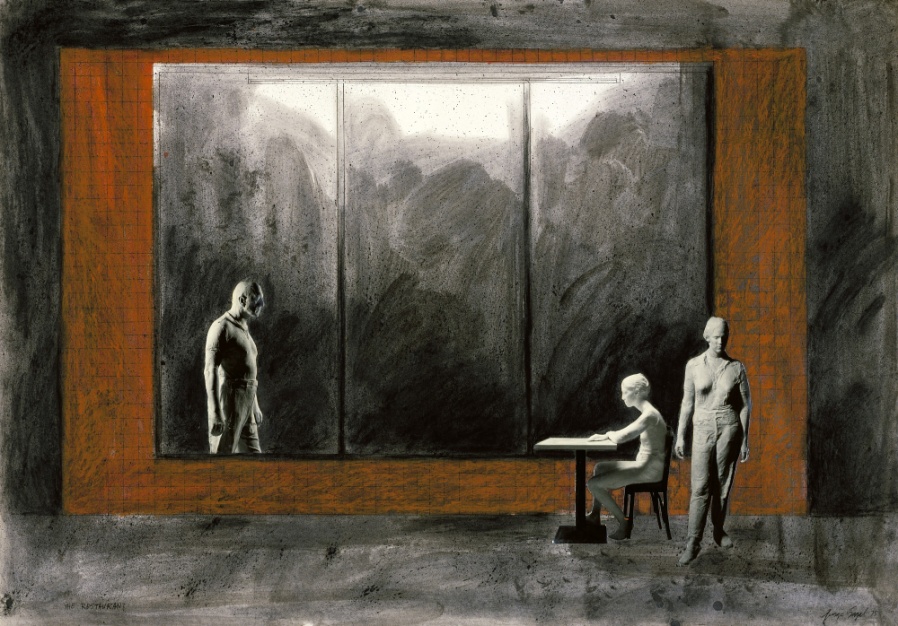
Phyllis Tuckman quoted Segal in her book George Segal, Modern Masters, Vol. 5, “My generation had a different mark on it because just about everybody was willing to fight Hitler. There was unanimity, a singleness of purpose in the United States during World War II. When I was a young kid, I remember everybody struggling or insecure or anzious about jobs being very scarce. But the streets were safe, and everybody agreed to play by the rules. Everybody thought there were in it together. There was a aense of extended family. It shattered after the war. The period you’re recalling was a disintegration into individual ego, self-gratification, and loss of identity to something outside of yourself or your body or your own sensations. My generation carries a memory of another set of attitudes.”30
In the 1990’s President Bill Clinton dedicated a memorial in Washington D.C. to honor Franklin Delano Roosevelt, and Segal was asked to create a life sized bread line to commemorate the struggles of the Great Depression.
